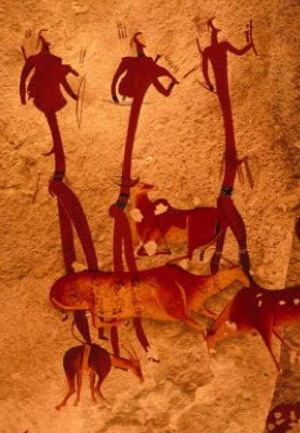
|
||
World Heritage in South Africa7/1/2009
UNESCO (United Nations Educational, Scientific and Cultural Organization) World Heritage Sites recognize and protect areas of outstanding natural, historical and cultural value. Given South Africa's diverse culture, rich history, and spectacular natural resources and wildlife, it is not surprising that the country boasts 8 World Heritage Sites. 1) The Fossil Hominid Sites of Sterkfontein, Swartkrans, Kromdraai, and Environs (1999) have produced abundant scientific information on the evolution of the human being over the past 3.3 million years. The Taung Skull Fossil Site is the place where, in 1924, the celebrated Taung Skull - a specimen of the species Australopithecus africanus - was found. Makapan Valley, within the site, features in its many archaeological caves traces of human occupation and evolution. Fossils found there have enabled the identification of several specimens of early hominids, more particularly of Paranthropus, dating back between 4.5 million and 2.5 million years, as well as evidence of the domestication of fire 1.8 million to 1 million years ago. 2) The Mapungubwe Cultural Landscape (2003) is set against the northern border of South Africa, adjoining Zimbabwe and Botswana. Mapungubwe developed into the largest kingdom in the sub-continent before it was abandoned in the 14th century. What survives are almost untouched remains of the palace sites and the entire settlement area dependent upon them, as well as two earlier capital sites, the whole presenting an unrivalled picture of the development of social and political structures over approximately 400 years. 3) Robben Island (1999) was used at various times between the 17th and 20th centuries as a prison, a hospital for "socially unacceptable" groups and a military base. Its buildings, particularly those of the late 20th century such as the maximum security prison for political prisoners, signify the triumph of democracy and freedom over oppression and racism. 4) The 395,367 acre Richtersveld Cultural and Botanical Landscape (2007), a dramatic mountainous desert in the Northern Cape, constitutes a cultural landscape that is communally owned and managed. This site sustains the semi-nomadic pastoral livelihood of the Nama people, reflecting seasonal patterns that may have persisted for as long as two millennia in Southern Africa. It is the only area where the Nama still construct portable rush mat houses (haru om). The pastoralists continue to collect medicinal and other plants for communal use, and boast a strong oral tradition associated with different places and attributes of the landscape. 5) uKhahlamba Drakensberg Park (2000) boasts an exceptional and dramatic rocky landscape with its soaring basaltic buttresses, incisive dramatic cutbacks and golden sandstone ramparts. Rolling high altitude grasslands, pristine steep-sided river valleys and rocky gorges also contribute to the beauty of the site. The area's diversity of habitats protects a high level of endemic and globally threatened bird and plant species. It also contains numerous caves and rock-shelters, featuring the largest and most concentrated group of rock paintings in Africa south of the Sahara. These paintings were created by the San people over a period of 4 000 years, and represent the complex spiritual life of this virtually extinct cultural group. 6) The Cape Floral Region Protected Areas (2004) is a serial site in the Western Cape, made up of eight protected areas, covering 1,366,487 acres. This region is one of the richest botanical areas in the world, and is home to nearly 20% of Africa's flora. The site displays the exceptional ecological and biological processes associated with Fynbos vegetation, which is unique to the Cape Floral Region. The diversity, density and endemism of the flora are among the highest worldwide. Specialized plant reproductive strategies, adaptation to fire, patterns of seed dispersal by insects, as well as patterns of endemism and adaptive radiation found in the flora, are of outstanding value to science. 7) The greater St. Lucia Wetland Park (1999) displays the ongoing fluvial, marine and aeolian processes that have produced a variety of landforms, including coral reefs, long sandy beaches, coastal dunes, lake systems, swamps, and extensive reed and papyrus wetlands. The interplay of the park's environmental heterogeneity with major floods, coastal storms and a transitional geographic location between subtropical and tropical Africa has resulted in exceptional species diversity and ongoing speciation. The mosaic of landforms and habitat types creates breathtaking scenic vistas. The site contains critical habitats for a range of species from Africa's marine, wetland and savannah environments. 8) Vredefort Dome (2005), approximately 75 miles south-west of Johannesburg, is a representative part of a larger meteorite impact structure, or astrobleme. Dating back 2,023 million years, it is the oldest astrobleme found on Earth so far. With a radius of 118 miles it is also the largest and the most deeply eroded. Vredefort Dome bears witness to the world's greatest known single energy release event, which had devastating global effects including, according to some scientists, major evolutionary changes. Despite the importance of impact sites to the planet's history, geological activity on the Earth's surface has led to the disappearance of evidence from most of them, and Vredefort is the only example to provide a full geological profile of an astrobleme below the crater floor. Vredefort Dome thus provides critical evidence of Earth's geological history and is crucial to our understanding of the evolution of the planet.
Let us help you plan your dream safari. call toll-free: 888.227.8311 or email us today
|
||
|



